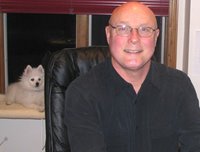GOODBYE FOR NOW FARGO/MOORHEAD
Seven years in Fargo and Moorhead changed me and my life for the better.
In 2000 my mother died, I was divorced after 35 years of marriage, and my best friend got sick suddenly and died a month later. I packed up my jeep and moved to the mountains of Ridgeway, Colorado.
I spent 2001 living in a loft on the side of a mountain where I photographed the seasons, traversed the 4-wheel drive mountain roads, sat in the natural hots springs in nearby Ouray, and consulted with local clients and several back in Minnesota.
In March of 2002 I headed to Fargo.
It didn't take me long to fall in love with my new home: the clean air, the Red Hawks, good customer service, and being able to get anywhere in 10 minutes. A native of Minnesota, the winters here don't bother me. I liked the people: caring, hard working, and self-effacing who raised solid children. I had to get used to their reticence and thinking that is more black and white than my world of grays.
A leadership consultant, I paid attention to local leaders and found some of the best I've seen anywhere: Dave Pinder at Cardinal IG, Wayne Voorhees, formerly with Northern Pipe Products, and Dennis Walaker, mayor of Fargo. More recently, I've been impressed with Michael Redlinger, the young city manager in Moorhead, and Bob Zimmerman, Moorhead City Engineer—the world's most patient man. I was disappointed in the provincial political assassinations of Robert Potts, Chancellor of the N.D. University System and Sandy Blunt, CEO of WSI (Workforce Safety and Insurance)--outsiders who tried to change the status-quo.
I enjoyed writing commentaries that were published in The Forum and bemused by the attacks on my political pieces by those Frank Rich, columnist for the New York Times, called a “Rump backwater minority”—the wing nuts who are destroying the Republican Party. For them the world is flat, gravity unreal, and up is down. F/M has its proportion of crazies.
Eighteen months after I arrived, I was married to Melanie and moved to her home along the Red River in south Moorhead. And I was introduced to the astonishing extended Fuchs family led by mother Pat--the loved and respected family matriarch. A talented and hardworking family they are; they take care of themselves and help one another.
I fought my first flood in 2006. That was nothing compared to 2009 when our family, friends, and coworkers built a 20,000 sandbag dike in three days. With each flood I was profoundly impacted by how hard the people in this region work, how much they care about their homes and communities, and how they help their families and neighbors.
Now we move to Minneapolis where Melanie begins an exciting new job that will utilize her many leadership and managerial talents. I return to my home of about 30 years, two of my three children, and five grandchildren. Two of Melanie’s children will be nearby. We will live within 15 minutes of Melanie's job, and I will walk our dogs around Lake Harriet in south Minneapolis.
I feel a sense of loss also: the Fuchs family, bantering with Gordy and the gang at the VIP where I lunch weekly with my good friend the Reverend Doctor Steve Streed, walking our dogs in River Oaks Point, our neighbors who fought valiantly to save their homes in the flood, and the solid character of the people of the Red River Valley.
With our large extended family, we will be back often for visits. Retirement down the road will bring us back permanently.
Farewell for now Fargo and Moorhead.
